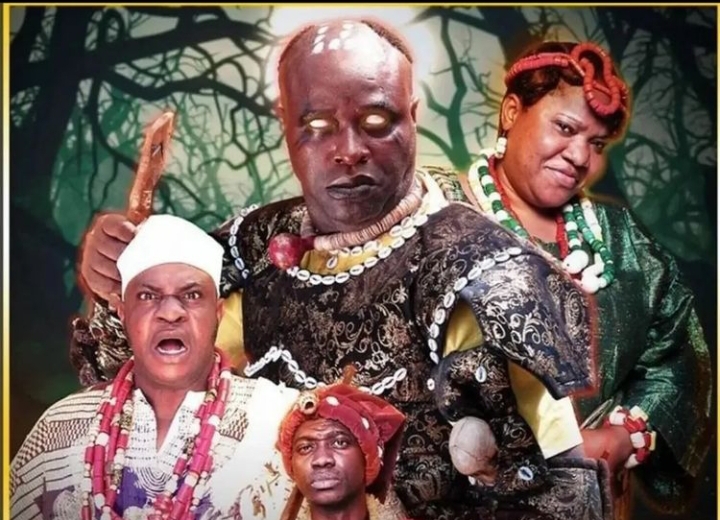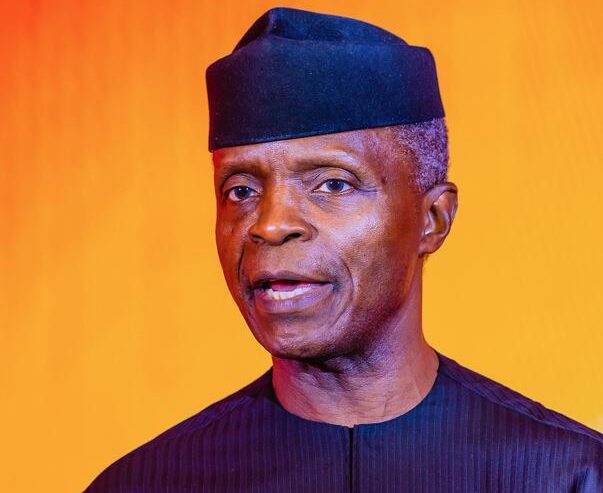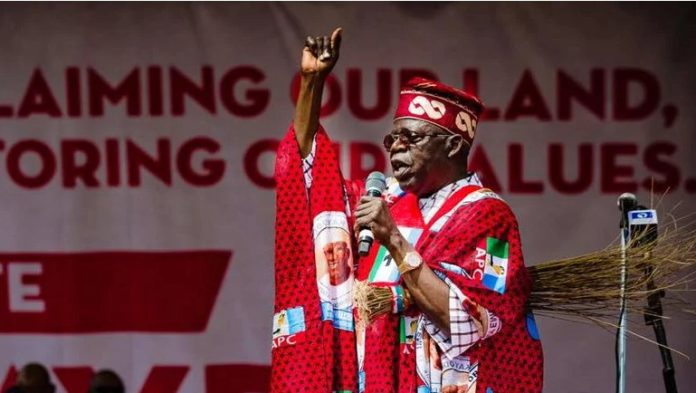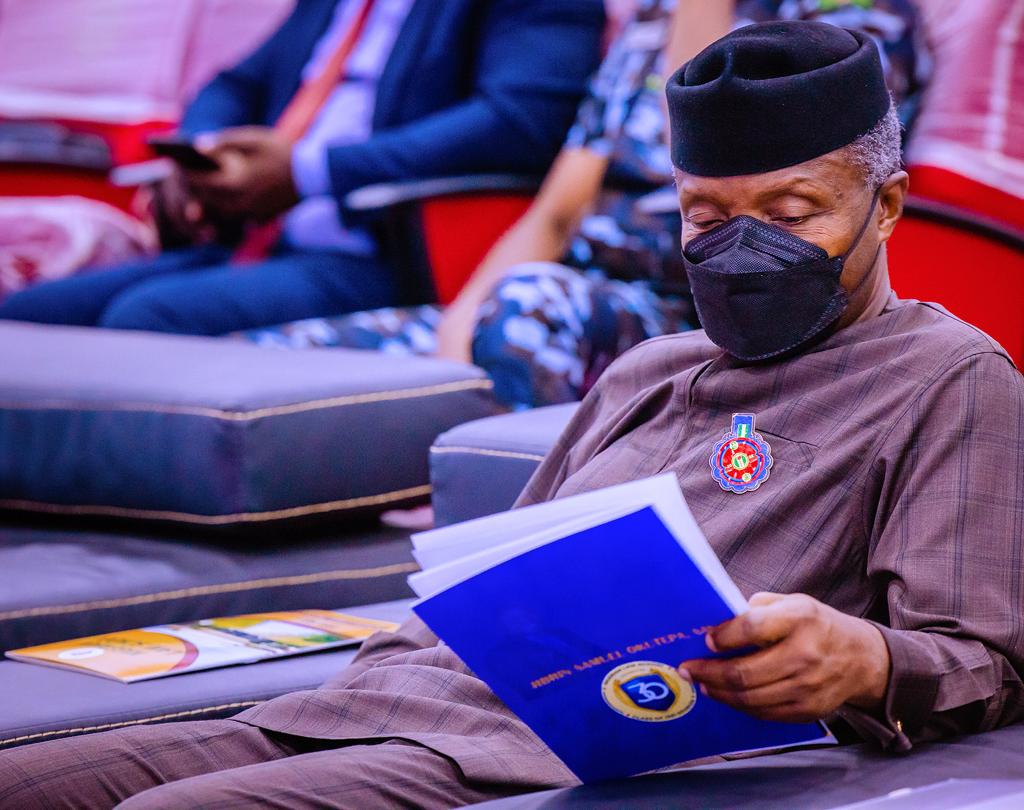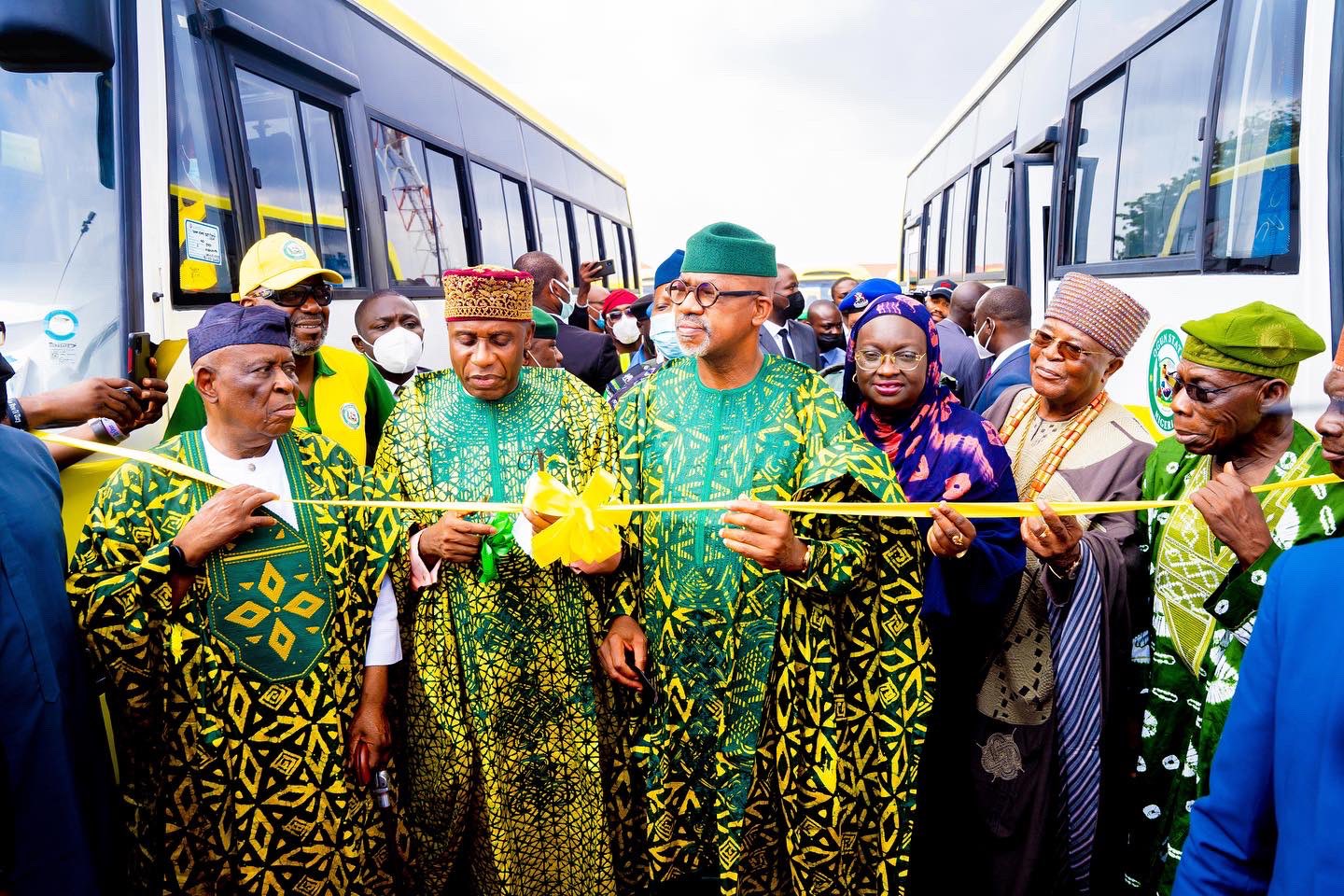King of Thieves, The Contractor... 10 movies you should see this weekend
BY IBRAHIM OREDOLA
A Review of ‘King of Thieves’. Disclaimer: This review features a number of spoilers.
The Yorùbá people have a saying that “T’ẹni n t’ẹni, t’èkísà ni tà’àtàn” which roughly means that what belongs to you belongs to you and that a rag has no other destination that the midden. This saying underscores the imperative need to cherish and prioritise one’s own cultural heritage, products, practices, and experience above foreign ones. Perhaps, this saying fits no other situation better than the (Yorùbá) filmmaking industry in Nigeria.
No doubt, many Nigerians are ready to “Watch Naija to grow Naija” but unfortunately, the Nigerian audience is thirsty for a level of expertise, finishing, and quality the industry only has in short supply. The industry has been invaded with products badly scripted, poorly made, and lazily marketed, so much that the only thing the industry seems to be famous for is the quantity of production. This is definitely without prejudice to the pockets of directors and filmmakers who have worked and are working very hard to give us a good experience of the industry. It is always a breath of fresh air when we have works from an elite group of filmmakers and the creators of Agẹṣinkólé might have inducted themselves into this circle of quality with this new movie.
Advertisement
Titled ‘King of Thieves’ (Agẹṣinkólé), the epic movie is a star-studded one, delivered by Fẹ́mi Adébáyọ̀’s Euphoria 360 in collaboration with Niyi Akinmolayan’s Anthill studios. The movie was co-directed by Adébáyọ̀ Tìjání and Tọ́pẹ́ Adébáyọ̀ Sàlámì, and it featured stars like Fẹ́mi Adébáyọ̀, Ọdúnladé Adékọ́lá, Ibrahim Chatta, Adédiméjì Lateef, Tóyìn Abraham, Aisha Lawal, Débọ̀ Adédayọ̀ (Mr Macaroni), and Samuel Anímáshaun Perry (Broda Shaggi). Other veteran actors featured include Péjú Ògúnmọ́lá, Délé Òdúlé, Ẹ̀bùn Olóyèdé (Ọláìyá Igwe), Fẹmi Òkúnù, Adébáyọ̀ Sàlámì, and Káyọ̀dé Ọláìyá (Adẹ́rùpọkọ̀).
The movie, which is set in the premodern Yoruba era (around the 17th and 18th centuries) narrates the story of Agẹṣinkólé (Fẹ́mi Adébáyọ̀), an all-powerful bandit-warrior who will stop at nothing to terrorise and lay waste to the prosperous kingdom of Ajérọ̀mí (wealth comforts me).
During his reign of terror, the kingdom, under the rulership of King Adégbìtẹ́ (Ọdúnladé Adékọ́lá), the great-grandson of Tadénikárò, explores all available strategies and means to defeat Agẹṣinkólé by deploying spiritual and physical attacks through priests, witches, wizards, and warriors, but with each attempt, he becomes more deadly. It was such a reign of absolute terror that no one was spared and the King eventually lost his only prince to the conflict. Twist and fate eventually brought the head hunter, Ògúntádé (Ibrahim Chatta), to confront the invincible Agẹṣinkólé and his ruthless soldiers. It was this encounter that eventually revealed Agẹṣinkólé’s identity as a reincarnated Prince Adeoye, the great-grandfather of Ògúntádé who was unjustly robbed of his right to the Ajérọ̀mí throne by an elite-devised scheme led by the chiefs and his opponent, King Tadenikaro (Taiwo Ibikunle), the great-grandfather of the incumbent King Adegbite, thus revealing a story of betrayal, vengeance, friendship, courage, and love.
Advertisement
It is important to clarify the title of the movie before going further as there were conflicting titles issues. From the first promotional e-flyers that were released last year, the title was “Ògúndábède” (named after one of the odùs of Ifá) and the alternate title was ‘King of Thieves’. But some Babalawos (Yorùbá spiritual priests) on social media had protested the use of “Ògúndábède” within the context of being “King” of thieves as that would be religiously incorrect. They accused the filmmakers of misrepresenting and casting African traditional religion in bad light which is typical of Nollywood. The filmmakers eventually succumbed to pressure and decided to change the name to ‘King of Thieves’ with the alternate title of “Agẹṣinkólé” (the one who rides to raid).
The acting is good, which is unsurprising since the movie cast was comprised of an appreciable number of stars with years of experience on numerous projects within the industry. The real surprise would have been anything below what was presented. Playing the eponymous role of Agẹṣinkólé, Fẹ́mi Adébáyọ̀ exemplifies the movie’s acting excellence with his portrayal of a bitter, vengeance-thirsty, ruthless, warmongering bandit-warrior. As you move from scene to scene, you can feel his blood boil, you can feel his hatred burn and you can feel his anger explode but surprisingly, despite being a “bad guy”, you are quickly moved to start rooting for him because you are somehow convinced that he’s justified in his rage. Fẹ́mi played his character so well that the only other actor that seems to come close to his acting excellence is his quartermaster, Abímbéṣù (Ibrahim “Itele” Yekini), who is fuelled by the same emotions. In fact, Yekini should get an award for the best supporting actor!
Then there’s Ọdúnladé Adékọ́lá playing King Adégbìtẹ́. Ọdúnladé is already notorious for exaggerated and over-theatrical acting, maybe that’s what endears him to those who love his acting. While I think his usual overacting has been well managed in this production, some scenes still stand out like the scene when he goes to the witches’ covenstead to ridicule them for not helping the kingdom against Agẹṣinkólé’s onslaught after the latter killed his son. Much of what he did in that scene were needless theatrics. Another scene (although it may be considered a problem with the script, rather than the actor) is where he is blaming his wife for the death of their son. One would expect that he would be in mourning instead of dragging out an unnecessary argument with his wife. What we expect to feel at that scene is mourning not some scattered dialogue with no direction. My general opinion is that an Ibrahim Chatta or a Lateef Adédiméjì would have played the role of royalty better. Similarly, Lateef Adédiméjì playing the role of Abégúndé, a warrior and Lafongídò masquerade bearer, is a waste of his acting pedigree, instead, Broda Shaggi would have been great for that role.
One of the ways in which we judge a cultural epic movie like Agẹṣinkólé is how accurately it interprets the African (Yorùbá) culture. And as far as this is concerned, the movie hit the pass mark. Asides from the fact that the movie costuming is impressive, the movie also excitingly showcased different aspects of Yorùbá culture as it relates to kingmaking/royalty (Ọba Jíjẹ), religion, worship, and spirituality (Ẹ̀sìn àti Ìbọ), defense/war (Ogun jíjà), commerce (Ètò ọrọ̀ Ajé), taxation (ìsákọ́lẹ̀), recreation (Eré ìdárayá) and so on. For instance, there’s a popular belief in Yorùbá culture that when a woman sleeps with her legs leaning up on the wall, then that woman must be an Àjẹ́ (witch) and it was surprising when King Adégbìtẹ́ caught his wife, Queen Móbónúọlá (Toyin Abraham) in that position and he was still asking, “Móbónúọlá, are you a witch?”… Oh! no, she’s an investment banker.
Advertisement
Another aspect of culture showcased by the movie is the role of women in Yorùbá politics and nation-building. We see Adégbìtẹ́ as a ‘king in the making’, prostrating for a group of women, which was the necessary respect he had to pay before he could become a king. We also see Queen Móbónúọlá’s independent efforts at ensuring peace in the land and how much she’s ready to sacrifice for her kingdom. The last unsuccessful coalition of spiritual forces to defeat Agẹṣinkólé includes more women than men. And finally, the defining act that brought peace to Ajérọ̀mí kingdom was engineered by Ògúntádé’s mother (Péjú Ògúnmọ́lá) in collaboration with àwọn abiyamọ (ancestral mothers).
Division of labour is another Yorùbá culture worthy of note that is showcased by the movie. And this is more in the area of internal security and external defense. The chiefs had called upon the hunters (who are traditionally meant not just to supply wild animal protein to the kingdom but also to also see to internal security issues) to wage a war against Agẹṣinkólé. The hunters led by Ògúntádé (Ibrahim Chatta) responded that they are not “hunters of men” and if the kingdom needs a force to confront the bandit-warrior, they can call on the ọmọ ogun (warriors), who are constitutionally designated for such purpose.
Agẹṣinkólé’s cinematic effect is well above the regular Nollywood average and anyone seeing the movie can see the efforts by the filmmakers to make the movie stand out. The picture quality is great and the use of colour and texture in combination with historical costuming blends really well. The wide and long shots we have of Agẹṣinkólé and his team’s entrance riding on horses evoke an emotional thirst for what is to come. The various close-up and medium shots of Agẹṣinkólé across the movie help us appreciate the black depth and dark detail that’s befitting of the movie’s atmosphere. The VFX works can definitely be better. For instance, Agẹṣinkólé’s all-white eyes are inconsistent across different shots and angles, the snakes at the execution shrine can be better placed and their movements can create less shadow, and lastly, the actors and the scenes where there are hurricanes and whirlwinds do anything but blend and they give off vibes similar to water and oil trying to mix. Even a theatre novice can tell that the work here needs some adjustment.
For many, dialogue is the heart of every movie. And for an epic movie claiming to showcase a culture that’s very rich in orature, dialogue becomes its essence. What makes the likes of Ṣaworoidẹ, Baṣọrun Gáà, Ti Olúwa Nilẹ̀, Àfọ̀njá and so on timeless is definitely their timeless dialogues. The movie did well, no doubt, but in comparison to the magnitude of the project, the dialogue could have been richer. The movie wastes more screen time on incantations at the expense of rich meaningful dialogue. And aside from the soundtrack which features generally throughout the movie at regular intervals, it won’t be bad if the movie had given us three to four memorable folklore songs, the only one we got was the one sung at King Adégbìtẹ́’s coronation.
Advertisement
Ọwọ wa ló bọ́sí
Ọwọ wa ló bọ́sí
Advertisement
Ọba tẹ gbà gbà gbà,
tẹ́ ò sùn, tẹ́ ò wo
Advertisement
Ọwọ wa ló bọ́sí
There’s also the use of popular modern-day slang like we see with Agẹṣinkólé’s men when they call their group slogan, “Agẹṣinkólé kan, Ọmọ ẹ̀ kan” (Agẹṣinkólé is one, his child is one) and then the rest of the bandits shout “Kúò ń bẹ̀un ná!” (a popular slang in some Qdot songs which means “Leave that place, first of all”) and then there was a line referencing Blackcamaru and Evangelist Oba’s comedy skit, “Tí ń bá mu yín dání, ẹ̀jẹ̀ yín le gbẹ” (in BlackCamaru’s voice, “if I hold you, your blood’s gonna dry”). In as much as these are done to evoke the audience’s solidarity and appeal to their existing experience, I see them as completely needless. This is not a stage play. But I guess, there’s only so much one can cook an Agẹṣinkólé’s Ebolo vegetable without smelling of Nollywood.
Advertisement
Nevertheless, I picked some words like Àsùnnara (subtitled to mean holiday) and a play on words like Olóore-Kà-ń-Láyà (great philanthropist) as used by Ògúntádé’s wife (Aisha Lawal) when Ògúntádé gifted out the only guinea fowl he had caught to a widow. And for the sake of proverb lovers, I managed to grab the following Yorùbá proverbs:
- A kìí ní ki ọmọdé má d’ẹ́tẹ̀, tó bá ti le dágbógbé (we don’t caution a child to not be leprous as long as the child can live in the forest alone)
- Òrí kìí balẹ̀ kò má yí ǹkan (The shea-butter can’t drop and not touch something)
- Tí a bá gbé ọmọrí odó, àá fì̀dí ẹ̀ tilè ni (when you carry a pestle, you have to stand it on itself)
- Tí igi bá wó lu igi, tòkè ẹ̀ làá kọ́ ré (When trees fall on trees, you start by taking the topmost off)
- Ohun tí àgbàlagbà fi ń jẹ̀kọ, abẹ́ ewé lọ́ wà (What the elders use in eating ẹ̀kọ is kept hidden under the leaf)
- Tabá ní ká tú di ṣùgbọ́n, à ó túṣu jú ìsàlẹ̀ kòkò lọ (If we decide to interrogate the ‘buts’, we will draw the yams beyond the pot’s bottom)
- Àkàrà wònpà ló kásẹ̀ ẹ̀kọ gìrì, ká mú yangan sán yangan ló n dá yangan lára (a force should be met with an equal force)
- Obè tí a bá fi èké kó jọ, ó máa ru paná ni (any soup prepared with envy/jealousy/scheming will definitely overflow into the fire)
- Torí afọ́jú ni òjò fí n kù, torí adití ni òjò fí ń ṣú (Thunder helps the blind know that it’s about to rain as the clouds help the deaf)
Agẹṣinkólé interrogates a lot of themes and sub-themes, but the movie itself, no doubt, holds a lot of parallels to Nigeria as a country. The happenings in Ajérọ̀mí perfectly mirror what is currently happening in Nigeria as the nation faces a barrage of vandalism, attacks, kidnappings, assaults, and killings from terrorist and bandit groups. In fact, there’s no better time for a movie like this to be made. Like Agẹṣinkólé, many of these groups claim to be on a vengeance war quest against a system that cheated and treated them unfairly. Nigeria is a country that has murdered so many freedom fighters and social activists including but not limited to, Ken Saro Wiwa, Dele Giwa, Funmilayo Ransome-Kuti, and a host of peaceful protesters across the country. All in various state-led devious schemes and rigged trials. After all these, Nigeria, like Ajérọ̀mí, intends to stay prosperous without atoning for these horrendous acts. But unfortunately, like Ajérọ̀mí, we must also have to deal with our own national Agẹṣinkólés. Ìgbẹ́ ò léegun, ṣùgbọn ẹni tó bá tẹ̀ẹ́ mọ́lẹ̀ a tiro (excreta has no bone but whoever steps on it must limp), every action comes with consequences.
Like King Adégbìtẹ́, our leaders are recipients of a dubious inheritance and still have no single clue on how to address the crisis rocking the republic. Blames upon blames, excuses upon excuses, like King Adégbìtẹ́, they blame the people, they blame one another, they blame the spiritual heads, they blame everyone but themselves. And there’s one other similarity between the movie and Nigeria as a country and that’s where the people are always the biggest losers at the end of the day. In the movie, the Queen is later brought back by Agẹṣinkólé in one piece just the same way he also frees Abégúndé (the kingdom’s war leader). These two people represent the elite class and despite how many of the “ordinary” people have been sacrificed for vengeance, the elite always manage to wriggle their way through because of their access to resources and because they are considered “important”, especially when it comes to negotiating against the system. In the end, ordinary people are the ones who lose the most.
Yorùbá people in their ancient wisdom submitted that “ọmọ àlè èèyàn ní rí’nú tí kìí bí, bẹ́ẹ̀ni, ọmọ àlè èèyàn ni à ń bẹ̀ tí kìí gbà” (only a bastard will be offended and not get angry and likewise, only a bastard will be appeased and not yield). We see the effect of this saying at the tail end of the movie when Ògúntádé has to beg Agẹṣinkólé to stop his revenge campaign and let peace reign. After much persuasion, Agẹṣinkólé eventually yields but not until he has reformed the laws of Ajérọ̀mí kingdom to be fairer to the common people. The current agitators and leaders in Nigeria have a lot to learn from this. While the agitators may have the right of action, they also need to know that an eye for an eye makes the world go blind. And our leaders also have to learn a lot about taking responsibility and making conscious effort to pacify agitators and create peace in the land. Just like the Anambra state governor, Chukwuma Soludo is already having a ‘truth’ conversation with his state’s Agẹṣinkólés, Nigeria as a country and its constituent states must also follow the same pattern. Until we start having conversations like this, Agẹṣinkólé will keep stealing sleep from our eyes.
In conclusion, the story itself is not a great departure from what’s known of an average Nollywood project, but the cinematic experience, the picture, and the branding around the movie have collectively delivered something above average. Ẹ̀sìn was a cinematic misadventure from Fẹ́mi Adébáyọ̀’s Euphoria 360 but with a strategic partnership, Agẹṣinkólé is a much better attempt by the duo of Fẹ́mi Adébáyọ̀’s Euphoria 360 and Niyi Akinmolayan’s Anthill studios at redefining big screen culture in Nigeria.
Verdict: 6/10
Ibrahim Ọ̀rẹ́dọlá writes from Ibadan and can be reached via [email protected]
Views expressed by contributors are strictly personal and not of TheCable.
Add a comment
